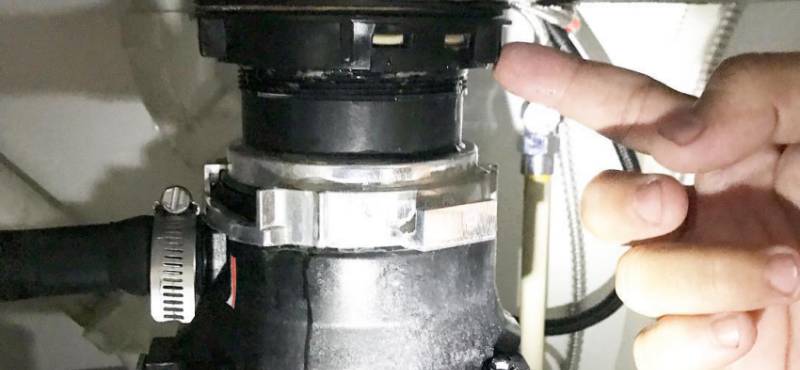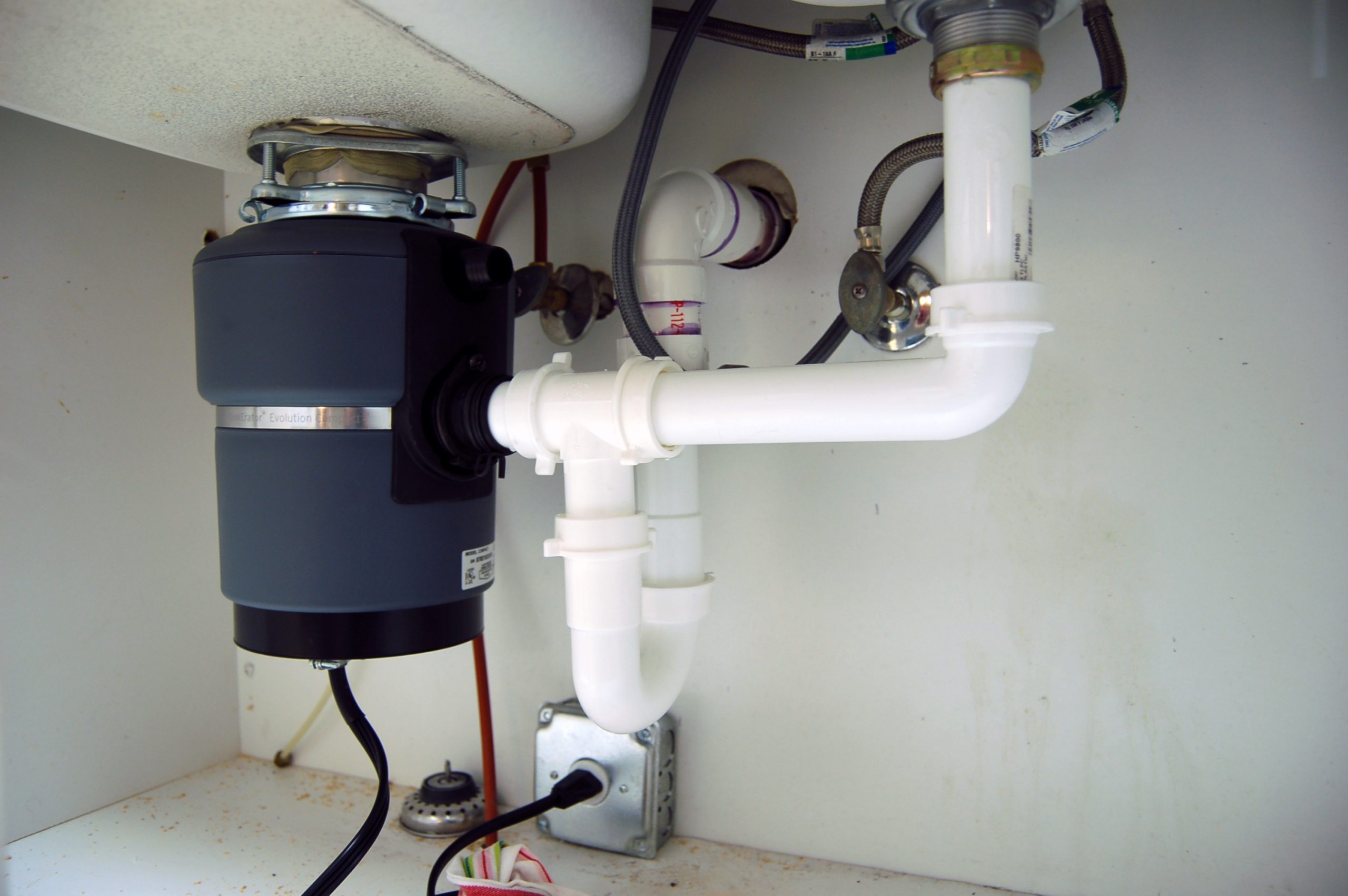Quick Solutions for Fixing a Dripping Waste Disposal Unit
Quick Solutions for Fixing a Dripping Waste Disposal Unit
Blog Article
Just about every person seems to have their private perception on the subject of The Handy Guide To Fixing Your Garbage Disposal Leaking.

Waste disposal unit are important cooking area devices that aid in throwing away food waste efficiently. Nevertheless, a leaking waste disposal unit can be an irritating and untidy issue to deal with. The good news is, many leaks can be taken care of conveniently with a couple of easy steps. In this write-up, we will certainly go over just how to fix a dripping waste disposal unit successfully.
Intro
Waste disposal unit are mounted under kitchen sinks and are created to shred food waste right into smaller pieces, enabling it to travel through the pipes system easily. While these devices are normally trustworthy, leaks can occur over time as a result of damage, loosened connections, or damage to the unit.
Step-by-Step Guide to Fixing a Leaking Waste Disposal Unit
Shut off the Power
Prior to trying any kind of fixings, make sure that the power to the waste disposal unit system is switched off to stop the threat of electric shock.
Find the Leak
Determine the exact location of the leak and establish the reason
Tighten up Connections
Make use of a wrench to tighten any kind of loose links between the disposal system and the pipes system.
Replace Seals or Gaskets
If the leak is due to worn seals or gaskets, eliminate the old components and change them with new ones.
Patching Cracks or Holes
For cracks or openings in the disposal system, usage epoxy or an ideal patching material to secure the broken area.
Recognizing the Source of the Leakage
Prior to trying to take care of a leaking garbage disposal, it is essential to identify the source of the leak. This can typically be done with visual evaluation or by performing simple examinations.
Visual Evaluation
Check the garbage disposal system meticulously for any type of indicators of water leakage. Pay close attention to locations around seals, gaskets, and connection points.
Testing for Leaks
One way to examine for leakages is by running water through the disposal device and checking for any type of noticeable indicators of leakage.
Usual Root Causes Of Leaks in Trash Disposals
Worn Seals and Gaskets
Seals and gaskets play a vital role in avoiding water from dripping out of the waste disposal unit. In time, these components can wear away, bring about leakages around the disposal system.
Loose Connections
The connections in between the garbage disposal and the plumbing system can end up being loosened with time, creating water to leak out throughout procedure.
Cracks or Holes in the Disposal System
Physical damage to the waste disposal unit, such as cracks or openings in the housing, can likewise cause leakages.
Devices and Materials Needed for Taking Care Of a Leaking Waste Disposal Unit
Before beginning the repair service procedure, collect the essential tools and materials, consisting of a screwdriver, flexible wrench, plumber's putty, substitute seals or gaskets, and epoxy or patching material for fixing fractures or openings.
Evaluating the Garbage Disposal After Repair Work
Once the repair work is complete, check the garbage disposal by running water with it to ensure that the leak has been fixed.
Preventive Maintenance Tips to Stay Clear Of Future Leakages
To stop future leakages, it is vital to perform routine upkeep on your waste disposal unit. This consists of maintaining it tidy, staying clear of putting non-food things or difficult things down the disposal, and regularly looking for leaks or other concerns.
Verdict
Finally, repairing a dripping garbage disposal is a relatively straightforward procedure that can be finished with basic devices and products. By complying with the actions laid out in this short article and practicing preventative maintenance, you can maintain your waste disposal unit get more info in good working problem and prevent expensive repair services in the future.
HERE’S HOW TO FIX YOUR GARBAGE DISPOSAL
WHAT TO DO IF SOMETHING IS STUCK IN YOUR GARBAGE DISPOSAL
If the impeller won’t turn, there’s probably something stuck in the disposal. It could be a steak bone or peach pit, although plumbers report pulling all sorts of inappropriate objects out of disposals, such as bottle caps or aluminum foil. Make sure power to the disposal is off, and look inside to see if you can see the source of the jam.
Never stick your fingers in a disposal. Pull out anything you see with tongs or pliers.
If the disposal still won’t work, it may be time to call a plumber or consider buying a new disposal. GEM Plumbing & Heating is here for all of your garbage disposal needs.
WHAT TO DO IF YOUR GARBAGE DISPOSAL DRAIN IS CLOGGED
Take everything out from underneath your sink and put a bucket or other container under your disposal to catch any water that drains out. Disconnect your disposal from the power supply. If it’s plugged into a wall outlet, unplug it. If it’s hardwired into an electrical box, go to the electrical panel and turn off the breaker for the disposal. Pour ¼ cup of baking soda into the drain, followed by ½ cup of white vinegar. Give the solution a few minutes to fizz and do its work. Look into the disposal with a flashlight to see if you can see an object that might be causing the clog. If you see it, remove it using tongs or pliers. MORE TIPS ON DEALING WITH A CLOGGED GARBAGE DISPOSAL
Never use drain cleaner in a garbage disposal. It can damage the plastic parts inside the disposal. You can also be splashed with the caustic liquid while working to clear the clog. Beware! Never stick your fingers into a garbage disposal. Trust us — not a good idea. In many instances, your dishwasher drains through your garbage disposal. This allows the disposal to grind any large food particles that may be drained out of your dishwasher. There are some jurisdictions, however, where the plumbing code prohibits such a connection. WHAT TO DO WHEN YOUR DISHWASHER DRAINS THROUGH THE DISPOSAL
Run some water in the sink so your plunger has at least a ½-inch of water to create a seal and plunge vigorously up and down several times. You may need to repeat this several times. Run hot water down the drain to clear any residue that remains.

As a passionate person who reads about Why Is My Garbage Disposal Leaking From the Bottom?, I figured sharing that piece of writing was beneficial. Those who appreciated our post if you please remember to pass it around. Thank you for taking the time to read it.
Click Here! Report this page